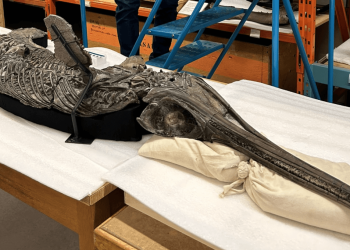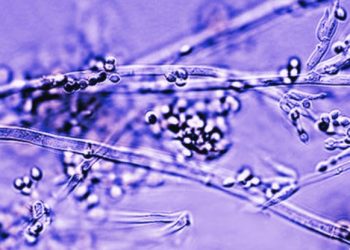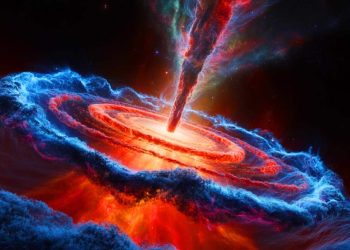Earth could be responding to huge amounts of carbon dioxide (CO2) that humans are pumping into the atmosphere by “overcorrecting” the imbalance, which could cause the next ice age to arrive on time instead of being delayed by tens of thousands of years, as had previously been predicted.
This is due to a new “thermostat” that so efficiently buries mountains of carbon beneath the seafloor that it could eliminate human carbon emissions within 100,000 years, researchers have found.
With both thermostats working in tandem, it is possible that the next ice age will begin on time, instead of delayed by the effects of climate changeco-author of the study Andy Ridgwellprofessor of geology at the University of California, Riverside, told Live Science.
The new thermostat does not protect humans currently living from the effects of global warming, the study co-author said. Dominique Hülsemathematician and biogeochemical modeler at the University of Bremen in Germany. “That doesn’t mean we’ll be safe from global warming in the next 100 or even 1,000 years,” he told Live Science.
Scientists have long suspected that Earth regulates its climate on geological time scales. Since the 1980s, researchers have hypothesized a mechanism called silicate weathering feedback, which occurs when rain picks up CO.2 air and sprays it onto silicate rocks – rocks containing minerals consisting of oxygen and silicon which make up about 90% of the planet’s crust. CO2 reacts with these rocks, dissolves them and forms molecules that seep into the ground and end up in the ocean. Once there, what used to be CO2 forms limestone and chalk, meaning it is locked away for millions of years.
Feedback on silicate weathering is like a thermostat because the more CO there is2 it is in the atmosphere, the more the Earth warms and the more the water cycle intensifies. As precipitation increases, silicate weathering accelerates, meaning more CO2 is transferred to the ocean and atmospheric CO2 falls back to background levels.
Feedback also works the other way. “If you are too cold and CO2 is too low, then the thermostat consumes too little CO2 compared to a context of constant CO release2 mantle, volcanoes and other magmatic formations,” Ridgwell said. In this scenario, less CO2 ends up in the ocean and atmospheric levels slowly rise to average levels, he said.
But the silicate weathering feedback moves slowly; it can take up to 1 million years after a disturbance to rebalance CO2 levels. As a result, some climate events cannot be explained, including Earth’s glacial and interglacial cycles, which are characterized by huge CO fluctuations.2 levels and temperatures that occur approximately every 100,000 years, Ridgwell said.
The alteration of silicates cannot explain either snowball earth eventswhich completely cover the planet with ice, Hülse said. If silicate weathering were the only thermostat regulating Earth’s climate, its harmonious balance would prevent it from tipping into such extreme conditions, Hülse explained.
A second “thermostat”
The new research was inspired by Hülse’s doctoral dissertationin which he calculated the amount of organic carbon preserved in ocean sediments during past climate events. His results showed that after periods of intense volcanic activity and warming, mountains of organic carbon were deposited on the seafloor. This finding suggests that there may be a link between atmospheric CO2 levels and burial of organic carbon in the ocean.
“There are certainly times in Earth’s history when a lot of organic carbon was deposited,” Ridgwell said. “We kind of know that there must be other things happening (besides silicate weathering), but it’s much more complex to put together in a model.”
But Hülse and Ridgwell addressed this challenge in the new study by merging their individual projects into a single model of the global climate carbon cycle that takes into account the burial of organic carbon in the seabed. Their results revealed a second “thermostat” rooted in the Earth’s phosphorus cycle, which begins on land with rocks containing minerals such as apatite, the researchers said.
The weathering of these rocks due to precipitation releases phosphorus, which seeps into the soil, enters streams and rivers, and eventually ends up in the ocean. Phosphorus there is an essential nutrient for tiny photosynthetic creatures known as phytoplankton, which use it to fuel cellular processes. When phytoplankton die, they sink to the ocean floor, where they deposit organic carbon, phosphorus, and other nutrients.
In a warmer world, more phosphorus is released into the ocean and phytoplankton proliferates, meaning more organic carbon and phosphorus reaches the seabed. However, warmer oceans also contain less oxygen, because oxygen becomes less soluble as temperatures rise. This deoxygenation releases the phosphorus deposited in the water column while burying the organic carbon in the sediments.
“Exactly how this happens is not entirely known mechanically, but we know it happens,” Ridgwell said. “When we’ve had events in the past where we saw massive amounts of organic carbon being buried after warming, there was very, very, very little phosphorus in that material compared to normal matter. If it’s not buried, it must have been returned to the ocean.”
As phosphorus is recycled, it re-enters the food chain and phytoplankton continue to proliferate, feasting on the phosphorus from the land and ocean. This leads to a boom in phytoplankton, which sucks up more and more CO2 of the atmosphere and deposits more and more organic carbon on the seafloor, which lowers global temperatures.
So, the warmer the planet gets, the more productive the oceans become and the more carbon is trapped, which cools the climate. But the difference between phosphorus and silicate weathering is that the phosphorus in the ocean does not decrease as soon as the Earth cools, because it continues to be released to the sea floor.
“The organic carbon thermostat is kind of like the silicate thermostat, except it has a compressor,” Ridgwell said. “You end up with so many nutrients in the ocean – and they’re recycled very efficiently – that it’s very difficult to get rid of them again.”
The phosphorus cycle eventually returns to balance, but the planet may “overcorrect” in the meantime, triggering events like Snowball Earth, the researchers said. It’s unclear how this second thermostat will respond to climate change at present, but the ocean is so rich in oxygen compared to the past that a snowball on Earth is unlikely, they said.
Instead, it’s possible that the organic carbon thermostat will catch up expected for the next ice age. Climate change disrupts the Earth’s natural cycles and previous research suggests that this could push back the next ice age, expected in about 11,000 years, by tens of thousands of years. But if the organic carbon thermostat activates, the atmospheric CO2 could return to background levels much more quickly, ensuring that the next ice age arrives on time.
“However late we end up with the next ice age… thinking about this mechanism could move it forward again,” Ridgwell said. “We will definitely start at some point; it all depends on when it starts.”









